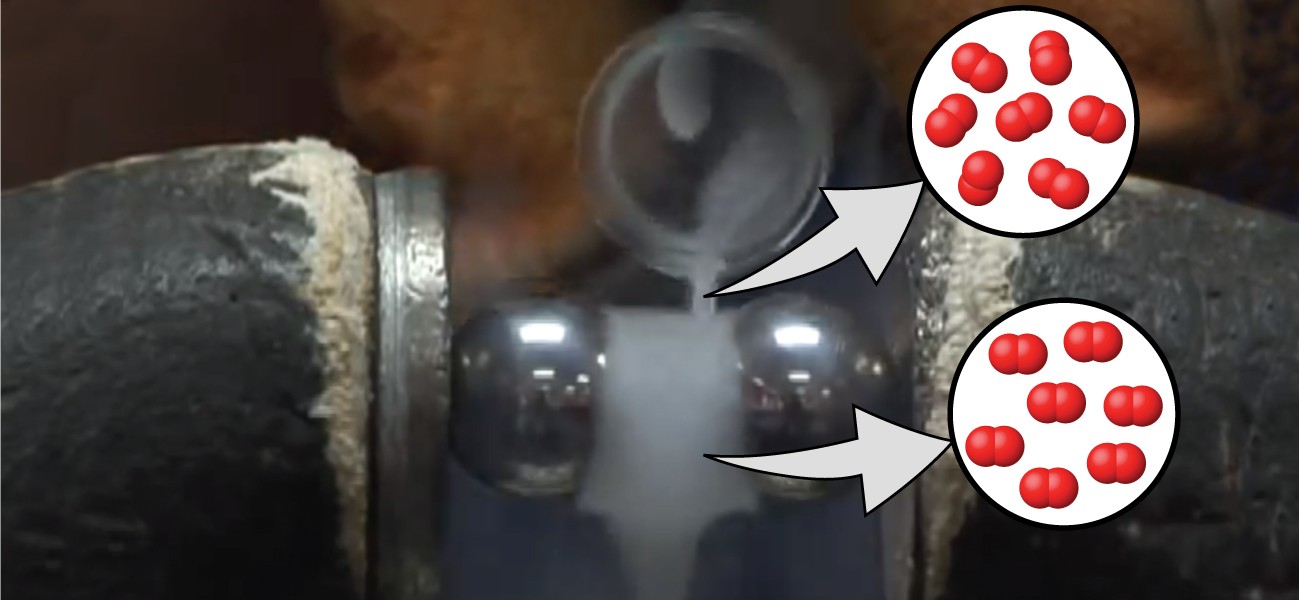Module 5: Chapter 5: Advanced Theories of Bonding
Section outline
-

Figure 5.1 Oxygen molecules orient randomly most of the time, as shown in the top magnified view. However, when we pour liquid oxygen through a magnet, the molecules line up with the magnetic field, and the attraction allows them to stay suspended between the poles of the magnet where the magnetic field is strongest. Other diatomic molecules (like N2) flow past the magnet. The detailed explanation of bonding described in this chapter allows us to understand this phenomenon. By: Rice University Openstax CC BY NC SAChapter Outline
- Valence Bond Theory
- Hybrid Atomic Orbitals
- Multiple Bonds
- Molecular Orbital Theory
Upon completion of this module, you will be able to:
Valence Bond Theory (5.1)- Describe the formation of covalent bonds in terms of atomic orbital overlap (CLO1)
- Define and give examples of σ and π bonds (CLO1)
Hybrid Atomic Orbitals (5.2)- Explain the concept of atomic orbital hybridization (CLO1)
- Determine the hybrid orbitals associated with various molecular geometries (CLO1)
Multiple Bonds (5.3)
- Describe multiple covalent bonding in terms of atomic orbital overlap (CLO1)
- Relate the concept of resonance to π-bonding and electron delocalization (CLO1)
Molecular Orbital Theory (5.4)
- Outline the basic quantum-mechanical approach to deriving molecular orbitals from atomic orbitals (CLO1)
- Describe traits of bonding and antibonding molecular orbitals (CLO1)
- Calculate bond orders based on molecular electron configurations (CLO2)
- Write molecular electron configurations for first- and second-row diatomic molecules (CLO2)
- Relate these electron configurations to the molecules’ stabilities and magnetic properties (CLO3)
To achieve these objectives:
- Read and view the Module 5: Chapter 5: Advanced Theories of Bonding in Moodle
- Read Chapter 5: Advanced Theories of Bonding in the OpenStax Chemistry: Atoms First 2e Pressbook
- Complete the Module 5: Chapter 5: Advanced Theories of Bonding Assignment
- Complete the Module 5: Chapter 5: Advanced Theories of Bonding Discussion
- Complete the Module 5: Lab 5: Video (VWS) Assignment - Advanced Bonding
Module Pressbooks Resources and Activities
You will find the following resources and activities in this module at the Pressbooks website. Click on the links below to access or complete each item.
Background Colour
Font Face
Font Kerning
Font Size
Image Visibility
Letter Spacing
Line Height
Link Highlight
Text Colour
